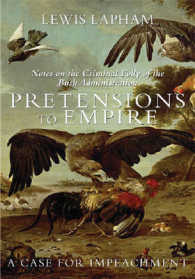Full Description
An Open Access edition is available on the Liverpool University Press website, thanks to funding from the Arts and Humanities Research Council (AHRC).
In the UK A-Levels and GCSEs in Classical Civilisation and Ancient History offer exciting avenues through which to access the cultures of people who spoke ancient Greek and Latin, and their neighbours, across the ancient Mediterranean and Black Sea worlds. They are inherently interdisciplinary, offering an outstanding opportunity to study a civilisation in the round, using diverse sources from literary and philosophical texts to legal documents, inscriptions, art, architecture and archaeology. Yet many people are either unaware of the existence of these courses, or do not understand their contents. This unprecedented study, by two Classics Professors at the University of Durham with extensive experience of teaching in schools and HEIs, charts the subjects' historical development and emergence in their current form since the mid-20th century, explaining and illustrating their contents. It describes the skills and competencies that they confer, which are valued by university admissions offices and employers alike. It presents the results of interviews with several significant participants in the story of these classical subjects and of questionnaires filled in by many additional teachers and students. It also offers practical advice on how to introduce Classical Civilisation and/or Ancient History at secondary level, with guides to bibliographical and other resources.
Contents
Chapter 1: The Classical World in Translation: A Proud British Tradition
Chapter 2: Reinvigorating Classical Civilisation Education in the 20th Century
Chapter 3: Ancient History Education: Past and Present
Chapter 4: Voices of Experience
Chapter 5: Advocacy for State School Classics Education
Chapter 6: Getting Started
Chapter 7: Next steps for Classics Education in Policy and Practice
Appendix 1: Guide to Resources
Appendix 2: Questionnaire
Appendix 3: OCR GCSE and A Level Content
Appendix 4: Regional Variations
Bibliography
Index








